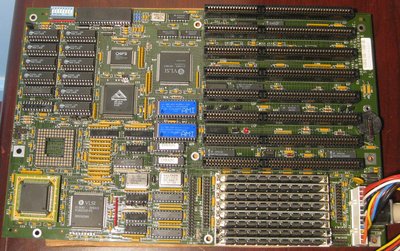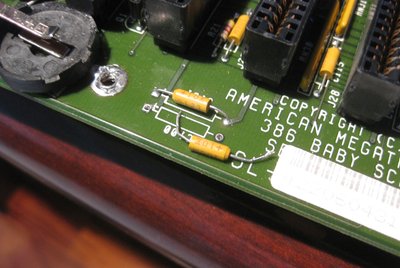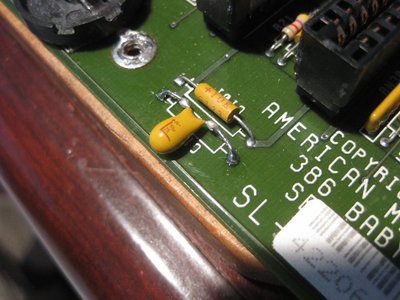First post, by feipoa
- Rank
- l33t++
I have an AMI Mark V Baby Screamer 386 board based on the VLSI 330, 331, and 332 chipset. It is a fast board with stable performance and normally houses my Ti486SXL-40. 32 MB RAM and 256K cache. Onboard IDE, serial, floppy, and parallel ports.
Anyway... I used it last about 5 months ago, put it in the closet, then pulled it out today and turned it on. The PSU doesn't turn on, as if it is in some circuit overload protection mode. I swapped PSUs, but the backup PSU responded in the same manner. I tested all the SRAM, swapped the CPU out for an AMD 386DX, put in a 66 MHz crystal oscillator, tried 8x1MB of DRAM, tried a different keyboard controller IC, pulled out all the ISA cards, pulled out the RTC battery, and removed all drives from the PSU power connectors. The result was the same; the PSU did not turn on. I measured the resistance from 5V to GND and it was around 500 ohms.
Does anybody have any idea what causes the PSU to behave like this other than a short or plugging the cables into the wrong socket? Any ideas for troubleshooting the motherboard? This is the fastest 386 board I've ever used and was hoping to fix it. It is also a very rare motherboard.
Plan your life wisely, you'll be dead before you know it.


